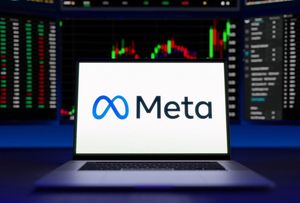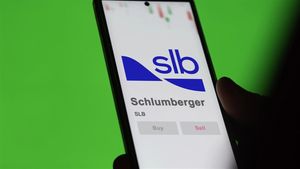
In its second lap around the public markets, Mobileye Global Inc. (NASDAQ: MBLY) is off to a fast start. Nearly a decade removed from becoming the largest Israeli IPO in U.S. history, the former Intel unit has advanced more than 50% since hitting the Nasdaq in October 2022.
Much has changed in the auto industry over the past decade. Supply chain nightmares. Sticker shock on new and used automobiles. And electric vehicles have burst onto the scene alongside plenty of Tesla challengers.
One constant, however, has been auto manufacturers’ relentless pursuit of technologies that make vehicles smarter and safer. Along the way, Mobileye has continued to develop its advanced driver assistance systems (ADAS) and get them integrated into more and more makes and models.
Since the company’s inception 20 years ago, some 135 million vehicles have been equipped with Mobileye’s artificial intelligence (AI) chips and cloud software to sense and navigate drivers’ surroundings. Mobileye technology has been embedded in cars made by 13 of the top 15 global automakers.
Now with a commanding 70% share of the ADAS system-on-a-chip (SoC) market, Mobileye is setting out to prove it has much more in the tank.
What Is Mobileye’s Growth Outlook?
Last month, Mobileye inked a deal with Volkswagen subsidiary Porsche to add its latest ADAS offering, SuperVision, to future Porsche sports cars. This marked the second major deal for SuperVision after Chinese automaker Geely agreed to team up.
With 11 surround cameras supported by light detection and ranging (LIDAR) technology, SuperVision will be in nine car models from six brands by 2026, according to Mobileye. By 2030, management estimates that 1.2 million vehicles will have SuperVision, eight times what is anticipated for this year.
Mobileye’s newest ADAS solution is only part of its growth ambitions. The company is hoping that SuperVision will pave the way for full self-driving (FSD) systems that allow ‘drivers’ to go hands- and eyes-free. Its Chauffeur product, which some are calling superior to Tesla’s troublesome FSD offering, is slated for production in 2026. If the technology is able to clear regulatory and consumer trust hurdles, it could have profound implications for daily commutes, road trips and food delivery.
For now, though, the consumer and commercial ADAS market is Mobileye’s main growth opportunity. The ongoing adoption of SuperVision and its predecessor EyeQ by automakers will primarily determine quarterly results. Further ahead, autonomous vehicle (AV) technologies and autonomous mobility-as-a-service (AMaaS) could combine with ADAS to create a half-trillion-dollar market by the end of the decade, according to Wall Street research firm Tigress Financial.
Tigress and the vast majority of Wall Street analysts aren’t the only ones bullish on Mobileye’s market. Widely followed Ark Invest CEO Cathie Wood has referred to driverless robotaxis as “one of the most important investment opportunities of our lifetimes.”
This year, Mobileye plans to deploy as many as 150 Chauffeur-equipped robotaxis across Europe and Israel as a test of its FSD platform. CEO Amnon Shashua predicted that hundreds of thousands of robotaxis could be buzzing around city streets by 2030.
As AV technologies emerge, Mobileye will lean on its ADAS dominance to convince investors that its stock is worth taking for a spin. At the midpoint, management’s revenue guidance implies just 12% growth in 2023, a slowdown from 35% growth last year. But as macro conditions improve and SuperVision awareness expands, Wall Street sees stronger results in 2024.
Based on the consensus estimate for next year’s earnings, Mobileye is trading around 50x. To some, the valuation is cheap, considering the company’s market leadership and long-range growth prospects. To others, it's a P/E ratio due for a service check.
Is a Mobileye Short Squeeze Down the Road?
The bears argue that Mobileye’s stock has gotten ahead of itself, especially given the near-term economic uncertainty. They say the competitive threat of Tesla’s FSD technology and future ambitions around AVs are further reasons to hit the breaks.
Together, these arguments form the bearish thesis on Mobileye and explain the stock’s heavy short interest. Approximately 27% of the stock’s 50 million share float is held short. Among U.S. large-cap stocks, only Sirius XM Holdings has a higher short ratio.
Mobileye’s high valuation and high short interest have set the stage for a potentially epic battle between the bulls and the bears. If the bulls are right and a short squeeze unfolds, Mobileye could accelerate to new highs.








